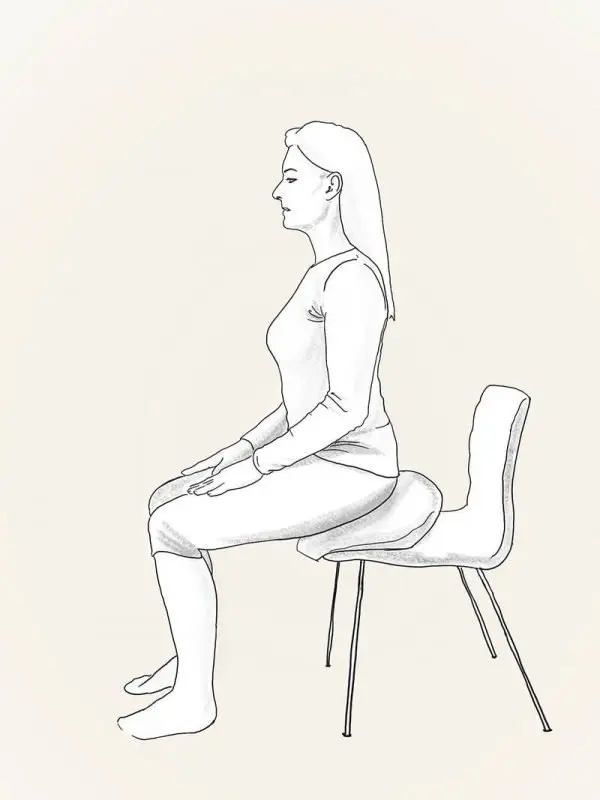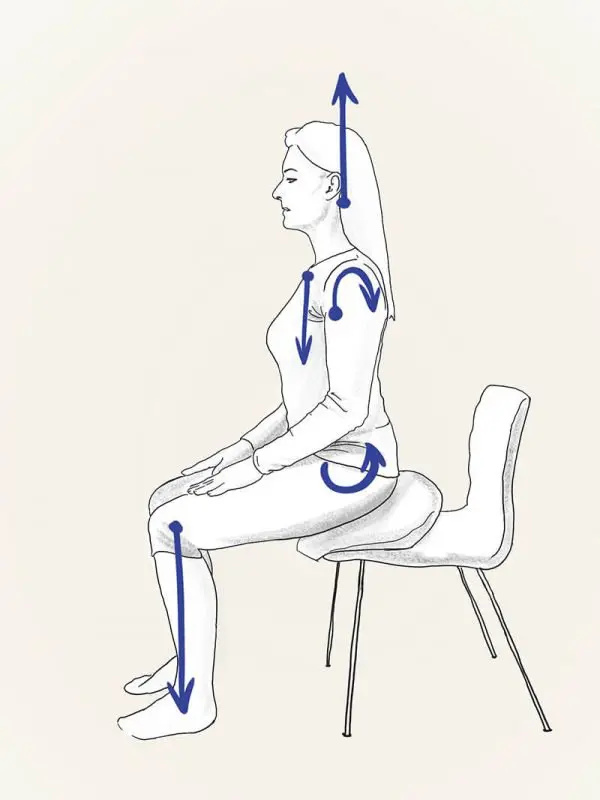We are told all kinds of stuff about meditation posture. Things such as it will align your chakras or increase the flow of kundalini energy through your spine or connect you to some cosmic energy source.
But actually, it's a lot simpler than that.
Good meditation posture requires you to sit in a relaxed but upright manner. This allows your muscles to relax in the correct way, your lungs to decompress, and your mind to be sharp and wide awake.
The hard part is sitting upright without slumping when you relax your body. So here is a simple guide to help you adjust your meditation posture and get the most out of your practice.
What is meditation posture
Firstly, when we think posture, we tend to over exaggerate or overdo our posture. We don't want to strain when we're sitting upright for meditation, as this can become uncomfortable after an amount of time.
Meditation posture is taking a relaxed but upright seated position with the body. This can be done on a chair, cushion, or floor with the legs crossed. The hands rest in the lap, and the head is tilted straight-forward.
Why good posture in meditation is important
We touched upon this earlier, but there are several reasons why understanding and maintaining a good posture in meditation is essential.
- Avoids pain: If you sit in a posture that is too strained, you can start to feel pain. New comers often over do it, which can create unnecessary pain.
- Limits distraction: Don't allow your posture to become a distraction to your practice. Knowing good posture allows you to focus on the practice itself.
- Keeps you alert: When your body and posture is too relaxed, it can also relax your mind. While this isn't necessarily a bad thing, if you struggling to stay alert or even awake during meditation, it's likely that your meditation posture is the problem.
- Allows for long meditation sessions: When you have good posture while meditating, you're able to remain in that position for extended periods, allowing you to meditate longer.
Proper meditation posture in a chair
When we think of meditators, we always imagine someone sitting cross-legged on the floor. This is the classical meditation posture. The primary reason that this has historically been the meditation posture of choice is simply that few people ever had access to chairs back in the day.
In actual fact, using a chair is no less beneficial – as long as you remain upright! It also puts less strain on your hips and your knees and doesn't require great flexibility either.
How to meditate in a chair
Here are a few tips for using a chair that will improve your sitting to a considerable extent.
1. Pick a chair that places your hips slightly higher than your knees when you sit on the edge. In fact, most chairs are designed this way anyway – so avoid unusually low chairs for your practice.
2. Sit towards the edge of the chair, and don't use the back. I know that at first, this seems uncomfortable, but once you line up your body correctly – holding yourself up this way will become quite comfortable.
3. Use a cushion (or a blanket) folded into a wedge shape under your bum. This makes the most significant difference in your meditation posture. It would help if you used your support in such a way as to create a slight tilt in your pelvis, as shown in the figure below. This will go a long way to effortlessly hold your spine upright and keep you from slumping.

4. Place your feet directly under the knees and shoulder-width apart.
5. Place your hands comfortably on your lap. You can also place your hands on the arms of the chair you're sitting in if you find it to be more comfortable for you.
6. Use a slight anterior pelvic tilt. Imagine you have a tail (go with me on this one). Imagine that when you go to sit down, you tuck your tail between your legs (like a frightened dog) and sit down on it. This curves your back into a slumped position. Now to try the opposite. When you go to sit down, imagine you pull your tail out behind you and only then sit down – this is what we want. Your bum will stick out behind you slightly. Once sat in this way, relax your lower back and allow that tilt to straighten out a little. This should make sitting upright much easier.
7. Settle your shoulders in the correct position. Raise your shoulders up to your ears, pull them back, and then relax them down. Your shoulders shouldn't be collapsing forward – but you also don't want to be pulling them back with effort – so relax the muscles holding them and sense how the scapula can slide a little down your back.
8. Pull up your spine in this meditation posture. Your spine joins your skull towards the back of your neck. So imagine that the top of your spine is connected to a rope with a helium balloon attached to it. Allow it to gently raise your spine by the back of your neck. This should pleasantly stretch your back – from your sacrum to the top of your head.

9. Relax the chest. Put your mind at the top of your chest – around the clavicles. Now take a deep breath in, and with a sigh, allowing the chest to sink down a little. It should not move down any more than a few millimeters, and your spine should still remain stretched up.
Now your posture is all set up. It might feel a little awkward at first. That's ok – no one really sits this way usually. This way of sitting will be working against your habitual posture at first. But if you set up your meditation posture in this way every time you begin meditating, your body will adjust. You'll start to carry this upright and elegant posture with you in your daily life.
You shouldn't really be "holding" this posture with any great effort. Only your spine should be pulled up gently from the back of your neck. The rest of your body should hang off that upwards stretch and relax – without falling into a habitual slump.
Feel free to make adjustments in this posture that suit your needs. Everyone's body type is different, and some have various injuries or aches that prevent them from sitting one way or another. Make the necessary adjustments without compromising on the reasons why a good meditation posture is essential. If the modification doesn't keep you alert or able to meditate for an extended period, it may not be worth making that adjustment.
Sit comfortably upright
Try it out next time you listen to a guided meditation session on Declutter The Mind and see what a big difference it makes to your level of concentration, as well as relaxation.
Have some tips regarding posture you'd like to share? Feel free to comment below.







